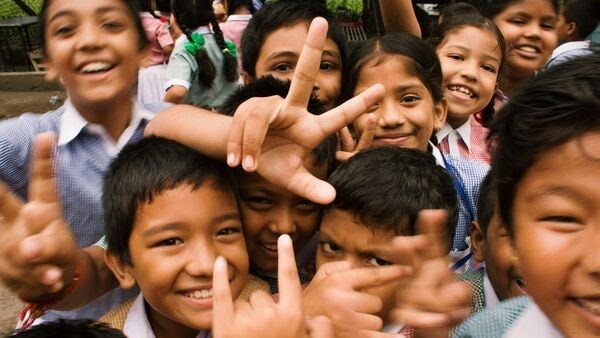India, which is projected to have 350 million children in its population by 2050 – 106 million fewer than it currently has – must navigate critical challenges such as extreme climate and environmental hazards to ensure their well-being, protect their rights and secure their future, a new UNICEF report said on Wednesday.
Extreme weather events due worldwide have been claiming lives, stealing livelihoods and causing huge losses. These include heatwaves in India, hurricanes Beryl and Helene in the US, Super Typhoon Carina in the Philippines, and floods in Brazil, Kenya and Tanzania. This year is on course to be the warmest year on record yet again, breaking the record set in 2023, when the annual average global temperature was 1.45 ± 0.12°C above pre-industrial levels (1850-1900).
UNICEF estimates that in recent years, the equivalent of about 20,000 children a day worldwide have been displaced by floods and storms exacerbated by climate change. These numbers will only grow, as will the many other deadly impacts of climate change on children’s health and development and on their communities, it said.
Demographic shifts
Though India will likely see its child population drop by 106 million to 350 million by 2050, it will still account for 15% of the global child population of 2.3 billion. India, China, Nigeria and Pakistan are expected to account for over a third of the world’s child population by then, according to UNICEF’s flagship State of the World’s Children 2024 report.
A global demographic transition is moving us towards a world where the number of children is plateauing, UNICEF said. By the 2050s, the world will be home to about as many children as it is today – around 2.3 billion. In some societies, children will account for fewer than 1 in 10 people, raising questions about their visibility and respect for their views and rights, it added. In others, large populations of children and young people will offer potential demographic dividends, it said.
Three global megatrends
Unveiling the report, UNICEF India representative Cynthia McCaffrey said three global megatrends – demographic shifts, climate crises and frontier technologies – were set to reshape the lives of children by 2050.
India ranks 26th out of 163 countries on the Children’s Climate Risk Index, with nearly a billion children worldwide already exposed to high-risk climate hazards. Children in India face acute risks from extreme heat, floods, and air pollution, particularly in rural and low-income communities, the report said, warning that the climate crisis will disproportionately impact their health, education, and access to essential resources such as water.
Suruchi Bhadwal of The Energy Research Institute (TERI), said there was an urgent need for climate action. “Children are vulnerable to direct and indirect impacts of climate change. We can address these challenges collectively by involving them as active agents of change. Frontier technologies, including artificial intelligence (AI), hold both promise and peril for children, she said.
The report highlighted the need for India to prioritise investments in health, education and sustainable urban infrastructure.
The Indian government and UNICEF signed a cooperation agreement for 2023-2027 to build on the government’s commitment and strong progress towards its sustainable development goals and contribute to the United Nations Sustainable Development Cooperation Framework (UNSDCF).



